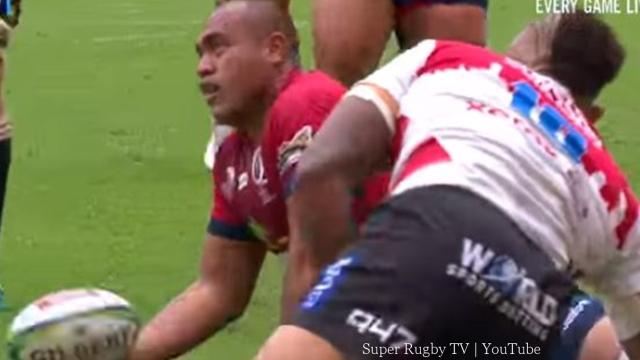The video referee came into being along with the summer game in 1996 with Rugby League being one of the very first sports to use video technology to aid on-field referees' decision-making. But, the idea of a "man upstairs" is currently dividing opinion - though it offers an in-depth review of a possible try or event within the game, it slows the match down and sometimes bizarre decisions are made. The majority of these bizarre decisions tend to revolve around the obstruction ruling.
Increasing controversy
Sometimes an obstruction is obvious - if a player runs directly behind one of his own men who is standing in the opponent's defensive line, thereby obstructing the defender's view of the play, he has clearly breached the laws of the game.
However, what is becoming increasingly frustrating is the fact that on-field referees are referring a significant amount of tries to the video referee that have barely anything wrong with them.
Take Castleford's game against Wakefield on Friday night; Trinity were 10-4 down going into the second-half, but looked to have reduced the deficit to two barely five minutes into the second-half when Max Jowitt played a one-two with winger Tom Johnstone. Referee Robert Hicks saw something in the build-up to the try that convinced him to go to the screen. The man upstairs was Phil Bentham; Bentham ruled that Wakefield centre Bill Tupou had obstructed Mike McMeeken. Yet, the ball had already gone too far across the defensive line for McMeeken to be able to tackle Jowitt - in fact, Jowitt was Jamie Ellis' target.
After the game, Castleford's Grant Millington called the decision to disallow the try "very harsh". There was no way on earth that McMeeken would have been able to stop the try if Tupou had not made contact with him anyway. The fact that McMeeken made a meal of the contact and waved his arms in the air evidently created enough doubt in Hicks' mind that he handed the decision over to Bentham.
When is an obstruction not an obstruction?
The general understanding within Rugby League is that an obstruction should only be given when the player in possession – in this case it was Matty Ashurst – travelled behind the dummy runner - which was Tupou. The RFL's rules on obstruction aren't clear: they give examples of what does and doesn’t constitute obstruction, but these all involve two players, while the most common incidents are when a third player – a dummy runner – is penalised.
On Friday night, the ball had already left Ashurst's hands, gone behind Tupou and claimed by Jowitt by the time that Tupou hit the Tigers' defensive line. It was a poor read by the Castleford defence and a great move by Trinity which should have been rewarded with four points - and would have been had the game not been on Sky. It's time to clear up the grey area concerning the obstruction ruling because it is currently plaguing the sport and turning games into farces.



